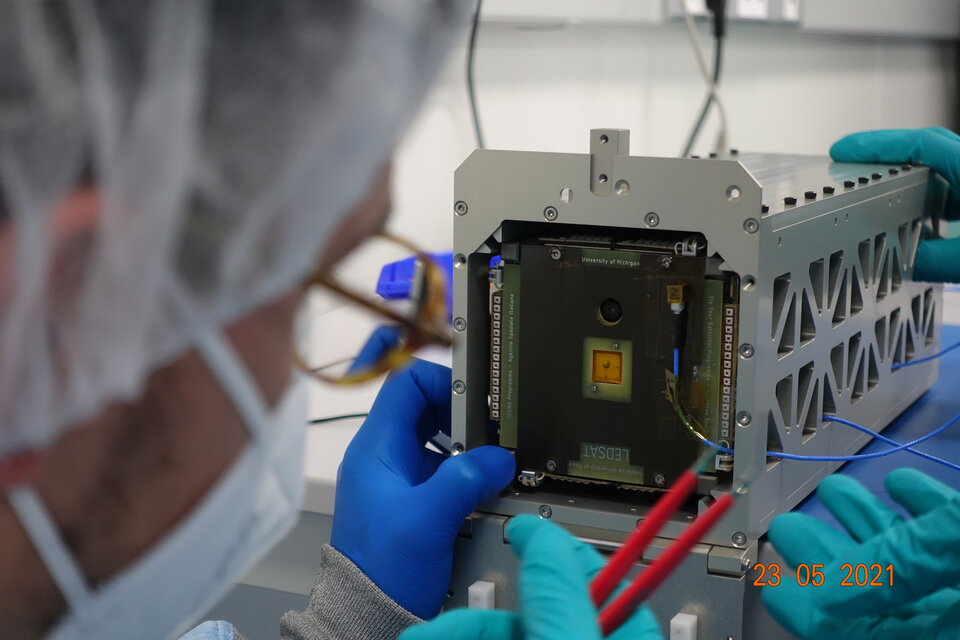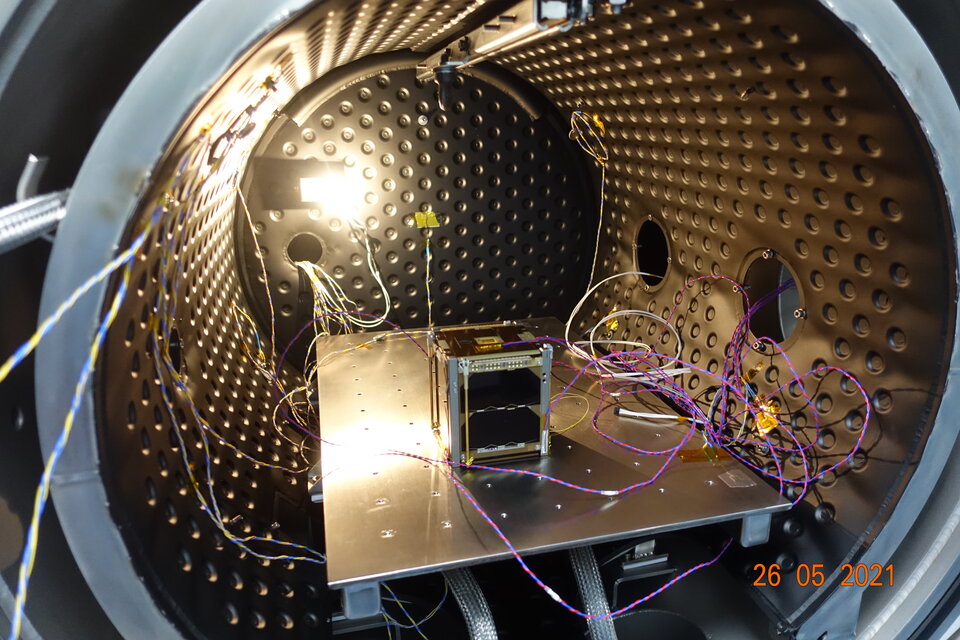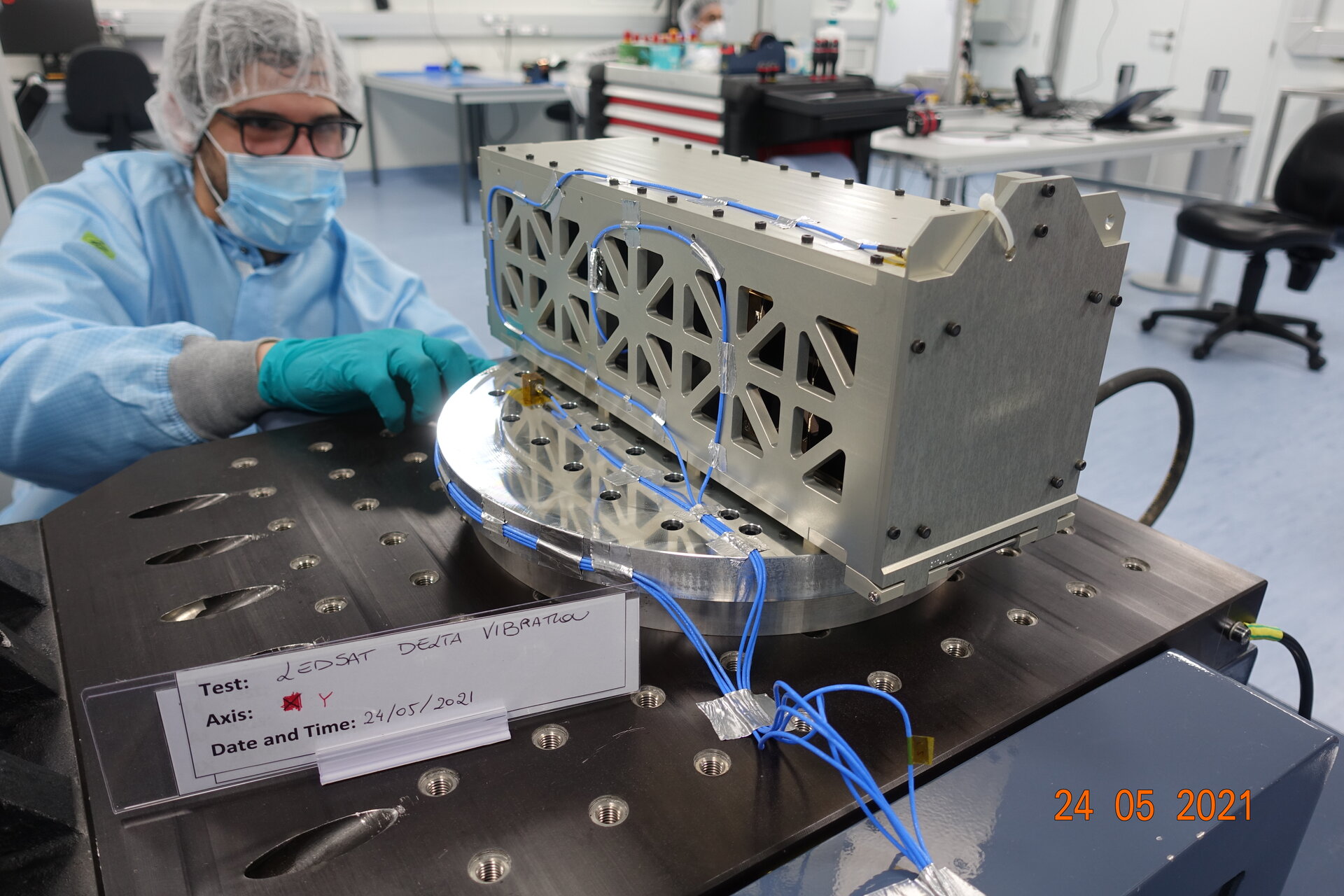LEDSAT passes Flight Acceptance Review and now has a ticket to orbit
ESA Academy’s Fly Your Satellite! programme gives university students the opportunity to devise innovative experiments and launch them onboard miniature satellites. Currently involved with the programme is LEDSAT, a 1-unit CubeSat from Sapienza University, Rome, Italy.
LEDSAT’s mission is deceptively simple but potentially very useful. Each face of the cube-shaped satellite houses an LED board, making six in total. An onboard LED controller is also part of the payload. When in orbit and in Earth’s shadow, LEDSAT will flash its tiny lights, and optical ground stations will try to observe these to assist in understanding how the satellite is oriented in space, this could be an invaluable method for future satellites to have their positions tracked and trajectories predicted, thereby avoiding collisions with other spacecraft.

LED flashes may further be used to demonstrate a means of optical communication between the satellite and the ground.
While bright enough to be tracked by ground stations the LEDs will not be bright enough to observe with the naked eye, and will be dimmer than most stars, therefore should not be a problem for important astronomy observations. The project is also developed in collaboration with astronomers across various institutes.
The student team behind LEDSAT have been busy preparing for their Flight Acceptance Review– the last review before acceptance for launch. In Berlin, they conducted a qualification shock test on a spare set of their payload: 6 LED boards and an LED controller board. The boards were installed into a CubeSat structure and experienced the shock levels expected during the journey into space. At ESA Education’s CubeSat Support facility in ESEC, Belgium, the team also successfully conducted tests random vibration and thermal vacuum testing to ensure their satellite is compatible with the Vega launch vehicle that will carry LEDSAT into orbit. LEDSAT was placed in a test deployer and shaken to simulate launch, and then put in a thermal vacuum chamber where it was cycled through high and low temperatures in vacuum.
The students were then ready for their Flight Acceptance Review Panel and Board Meetings – crucial final hurdles before being able to launch their satellite. The purpose of these sessions is to ensure that a satellite is fully tested and built correctly, is qualified for launch, has no outstanding design issues, has a ready and tested ground segment, and that the project meets all the relevant legal and regulatory requirements such as Space Debris Mitigation measures.
The Flight Acceptance Review, like many aspects of the Fly Your Satellite! programme, gives students direct access to ESA experts, allowing for the effective transfer of knowledge, and so dramatically improving a mission’s chances of success. In fact, the Fly Your Satellite! Flight Acceptance Reviews are very similar to those that many ESA satellites undertake before their launch, and often the same experts are involved.

The Panel Meeting saw a team of ESA experts thoroughly examine the students’ Flight Acceptance Review Data Package. They needed to ensure that everything was compliant with the requirements and specifications. As expected, they uncovered some minor issues that the LEDSAT team were able to resolve. Next came the Board Meeting, where further ESA experts examined recommendations from the Flight Acceptance Review Panel. Some actions were identified and the team were given time to complete these before two subsequent meetings after which the Board, impressed with the hard work put in by the students, declared the mission ready. The LEDSAT team were given their “ticket to orbit”.
This means that the team is now ready to ship their flight model to the integration facilities in Europe and, together with the ESA Education Office, will complete the final stages of the launch preparation, with a view to launch this summer!


